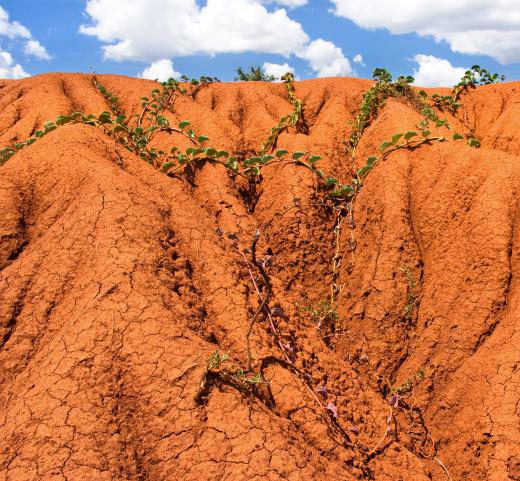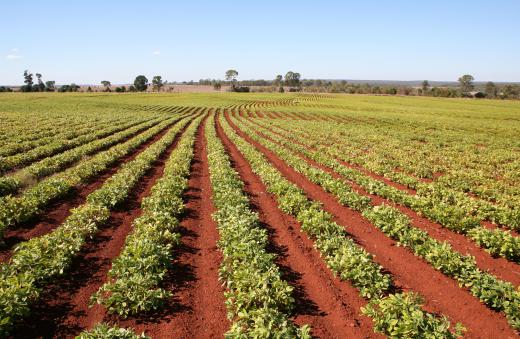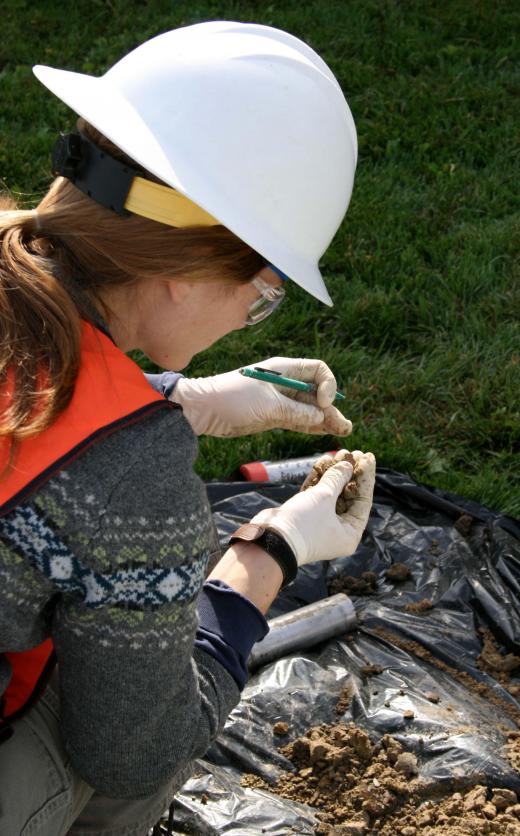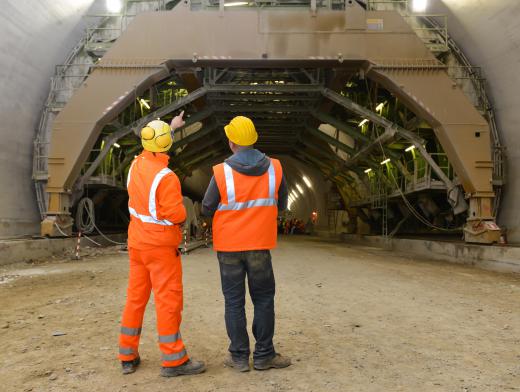What are the Different Types of Soil Testing?
Soil testing is a valuable tool used to help farmers realize a maximum crop yield. In the construction industry, preliminary testing is mandatory in most localities in order to detect contamination, determine suitability for construction, and select the proper type of foundation. The various types of soil tests include tests for contaminants and mineral concentrations, compaction tests, cone tests, consolidation tests and percolation tests.
Since the nutrients required for plants are different for each species, soil testing for agricultural purposes involves evaluating nutrient levels required for specific crops. Soil composition also varies at different depths, so samples must be taken from the level where the most root activity will occur. Two element levels frequently tested are nitrogen and phosphorus. A variety of methods exist to measure nitrate and ammonium, the most common forms of nitrogen used by plants. The Bray P1 test is used to check phosphorus levels in acidic soils, while the Olsen sodium bicarbonate test verifies phosphorus levels for alkaline soils.

Many countries have instituted restrictions regarding building on sites which contain potentially toxic or carcinogenic wastes, so knowing the history of a property prior to development is essential. When a location has been used for a purpose that might result in contamination, soil testing needs to be conducted prior to any development. One unique method of testing on-site for such substances is a laser-induced fluorescence system. This test employs a truck-mounted sensor which can detect subsurface petroleum hydrocarbons and uranium. Other methods include testing soil vapors and using pore water samplings taken from the designated area.

Prior to installing subsurface septic or sewer filtration systems, the required soil testing usually includes soil percolation and soil profile tests. The percolation test simulates the conditions of a septic system and measures the ability of the soil to absorb liquid. In addition to running test holes to the level at which the system will be placed, it is also necessary to make certain the water table at the lowest point is more than two feet (.61 m) lower than the level of the septic system. Soil profile tests evaluate the texture of the soil, whether or not it is water saturated, and the depth of the underlying rock layer.

Soil testing is essential in construction in determining the types and depths of foundations required for different buildings on different sites. Geotechnical soil testing involves boring into the soil of a proposed site, and then running lab tests on the samples to determine soil composition. Compaction tests are critical in determining if clay soils are compatible with building, what kind of equipment should be used to compact the soil, and how much compaction is required before pouring the foundation.

One of the most common on-site tests for investigating soft soils is the cone penetration test, developed in Holland in the 1950’s. This relatively inexpensive soil testing method measures resistance and friction against a cone-shaped instrument as it is pushed into the soil at a constant rate of speed. The primary purpose of this test is to predict the vertical capacity of deep foundations and for soil stratigraphy.

Another reason for soil testing is to detect the presence of expensive clay. Expansive clay contains water-absorbing minerals which cause it to swell when wet and contract when dry, resulting in volume changes of up to ten percent. These clays appear all over the world and are the primary cause of damaged foundations. It is possible to build on expansive clay as long as the foundation is constructed in a manner to maintain moisture control. Drilled pier foundations have been used on expansive clay in some areas, though the most stable approach appears to be extending the foundation beneath the zone of water fluctuation.
AS FEATURED ON:
AS FEATURED ON:
















Discussion Comments
@Nefertini - That's an interesting example. I've done soil ph testing for gardening. Some plants, such as azaleas, like acid soil and others grow best in a more alkaline garden. It's important to know what kind of soil you have so you'll know what plants will grow best in it or what you will need to do to make your garden more conducive to plant growth before you add your seeds.
Here's an example of why soil testing services are vital before construction. When I moved from Ohio to Texas, I couldn't understand why there were no basements in the Texas homes. In Ohio, practically every home has a basement, and families seek shelter in them during tornado season. Since Texas is prone to tornados, I found the absence of basements puzzling until I learned the reason is that the clay soil in Texas makes building basements cost prohibitive. This soil expands and contracts with the weather and rain or lack of rain, and this shifting soil puts too much of a stress on basements. Builders in Texas often add a second story and build up instead of down as a result.
Post your comments